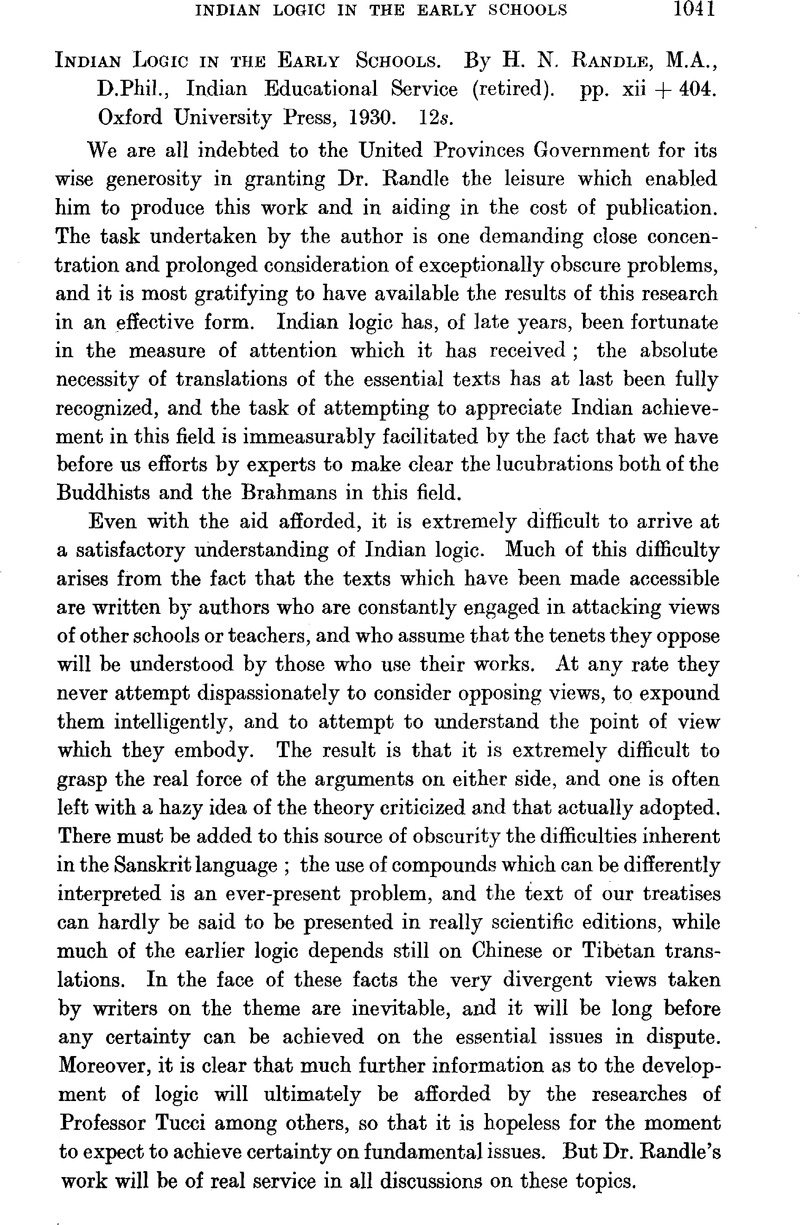No CrossRef data available.
Published online by Cambridge University Press: 24 December 2009

page 1042 note 1 Keith, , History of Sanskrit Literature, p. 13Google Scholar; BSOS. iii, 623–5.Google Scholar
page 1043 note 1 It must be noted that Jacobi (SBA. 1929, pp. 608-16) has thrown grave doubts on this assertion, and rendered it most improbable.
page 1043 note 2 Keith, op. cit., pp. 460, 461.
page 1044 note 1 The Nyāyamukha of Dignāga, p. 31, note 58.
page 1044 note 2 See the restored text by H. R. Rangaswamy Iyengar (Mysore, 1930), i, 14.
page 1044 note 3 See Indian Studies in Honor of Charles Rockwell Lanrnan, pp. 79–102.
page 1044 note 4 Some Aspects of the Doctrines of Maitreya(nātha) and Asaṅga (Calcutta, 1930), pp. 1–17.Google Scholar
page 1044 note 5 Introduction (1931), p. xxvi.
page 1044 note 6 Nyāyapraveśa (from T’oung Pao), pp. 7–9.
page 1044 note 7 Indian Logic and Atomism, p. 25; The Karma-Mīmāṁsā, pp. 5–7.
page 1045 note 1 Indian Studies, pp. 145–165.
page 1046 note 1 He wrote in A.D. 991; Indian Logic and Atomism, p. 32, and there is no evidence of a consistent tradition, while as regards the Nyāya a break is attested after Uddyotakara.
page 1046 note 2 Nyāyakandalī, p. 200: anumeyaḥ pratipipādayiṣitadharmaviçiṣṭo dharmī.
page 1047 note 1 Indian Logic and Atomism, pp. 137 ff.
page 1047 note 2 It must also be remembered that to Dignāga the probandum is neither P nor S, but P as related to S, which explains his sense of anumeye sadbhāvaḥ. See Tucci, Nyāyamukha, p. 15; Stcherbatsky, , Logic, ii, 58, n. 1.Google Scholar
page 1047 note 3 Op. cit., p. 140.
page 1047 note 4 IHQ. 4, 19–22.
page 1047 note 5 Accepted by Dr. Randle, p. 136.